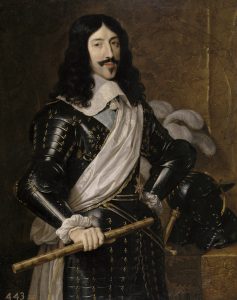Robert Caron the Ancestor
The various versions concerning the origins of Robert Caron the ancestor could alone be the subject of a voluminous work. All the genealogists, it seems to have written about the ancestor Robert Caron and his journey is quite intriguing.
In his 30-volume work, “Our Ancestors,” Gérard Lebel summarizes the opinion of many of the French origin of Caron’s first ancestor. He asks, “Where did he come from? Three and a half centuries have sunk to the bottom of the hourglass and genealogists have yet to find an absolutely certain answer to the question…”
In the historical research bulletin (1937), Father Yvanhoe Caron joined Father Julien Déziel and his ancestors to claim that Robert Caron was originally from Saintonge (today’s Charente Maritime). “Some authors wrote Father Caron, claimed that Robert Caron came from Normandy, others said he was Breton. The more we study the origins of Canada’s first settlers, the more we are convinced that amongst those who came to New France, from 1630 to 1640, a high proportion of people from Saintonge and Aunis. Robert came from Saintonge and he embarked in La Rochelle for Canada”…
Another well-known genealogist, Father Archange Godbout, discovered that several Caron families lived in La Rochelle in the 17th century. They were for the most part Protestant, which does not mean that the ancestor Robert was. Gérard Lebel concluded that the file concerning the origin of Robert Caron remains open. He notes, importantly, that his marriage certificate disappeared with other acts entered in the registers of the Notre-Dame de Québec Church before 1640. On June 15 of that year, a fire reduced them to ashes, at the same time as the documents of the registry and a large part of the contracts between individuals. Attempts have been made to reconstruct them from the memory of families and witnesses at the time, but they have remained incomplete. This explains the difficulty of genealogists concerning the origins of certain ancestors.
Robert Caron at the time of Louis XIII
Throughout life, we can pinpoint events that steer our destiny in another direction that we hadn’t initially planned. Just like us, our ancestor Robert Caron certainly did not escape this predicament, but what was triggered his adventure towards New France? Certainly, it took a dose of boldness and taste for adventure to attempt a crossing with no guarantee!

Louis XIII – Philippe of Champaigne – Source Wikicommons
We know that he was born approximately in 1612 in France populated by around 18 million inhabitants, more than 4/5 of whom are peasants. Research has never been able to determine his region of origin but it can be assumed that according to geographic sources of surnames in France that his family came from the north, namely Normandy, Picardy, Nord and Pas-de-Calais, and perhaps of the greater Paris region and even of present-day Belgium, which was then known as the Spanish Netherlands. Nowadays, the Carons are concentrated in the regions mentioned above.
The innumerable wars, which took place in these regions of France or it, could simply through the years written traces of his birth and the origin of his parents have disappeared.
Was he a soldier? Possibly but more a peasant; or did he practice a trade like weaver, mason or carpenter. Were his parents’ victims of these wars? Did he have brothers and sisters who were victims of the same fate? Had he ever been married? Did he have children that would have been born and died in France? All very legitimate questions (1).
In March 1632, by the treaty of St-Germain-en-Laye, England returned to New France to the French. Champlain did not return to New France until the following year and prepared for the arrival of a few families in 1634. In 1635, Richelieu slowed down the efforts of colonization and redirected the resources of men and material to reconquer the northeast provinces; in fact, the so-called Thirty Years’ War (1618–1648), during which France had avoided taking part in it directly, moved to the border provinces of the northeast. Richelieu had declared war on Spain; Artois must return to France and in fact, in 1640, Artois became French again but at the cost of sacrifices to which the inhabitants paid a large cost: overwhelming taxes, famines and epidemics.
That year (1636) and the following years were years of military defeat during which Corbie was taken by the Spaniards and Paris was threatened. This year was also a particular year of deadly heat waves where the north of France saw 500,000 people perish from the heat, infectious diseases and famine.
Robert Caron was an adult of about 24 years old in 1636. He was aware of an uncertain future at a time when a peasant belongs to his lord. He cannot hunt or fish; he cannot own land.
Our ancestor Robert then volunteered to travel to New France for a promise of freedom: to marry there, build his house, cultivate his land, and hunt. He would also have the freedom to sell his land and acquire more, which he would never have achieved in his native France! (2)
Translated footnotes:
(1) “The peasant family of the 17th century is less numerous than one likes to imagine: the age of marriage is late (26 to 28 years for men, 23 to 25 years for women and women die. They have an average of five or six children, half of whom often do not reach adulthood. Childhood does not last long: from 5 to 7 years old, the young pass directly into the world of adults, whom they share as well work than clothing and lifestyle.”– Au Temps de Henri IV, Collection André Castelot, Librairie Plon 1997.
(2) Marcel Trudel in his ‘Catalog des immigrants 1632–1662’ specifies that the year 1636 is not certain although 1634 was considered as a hypothesis according to other sources.


